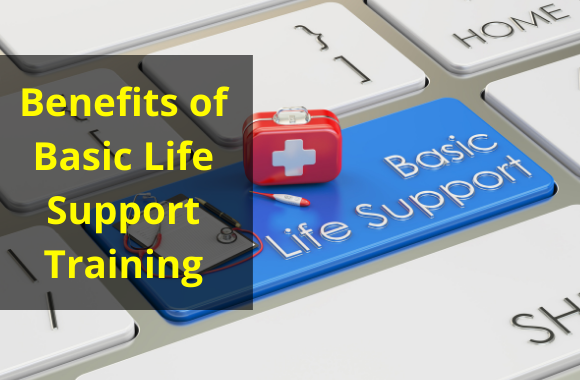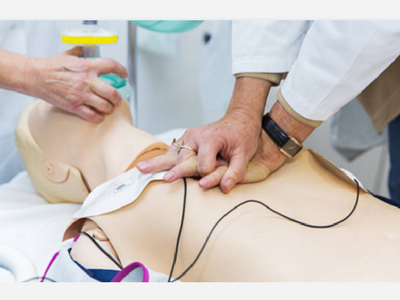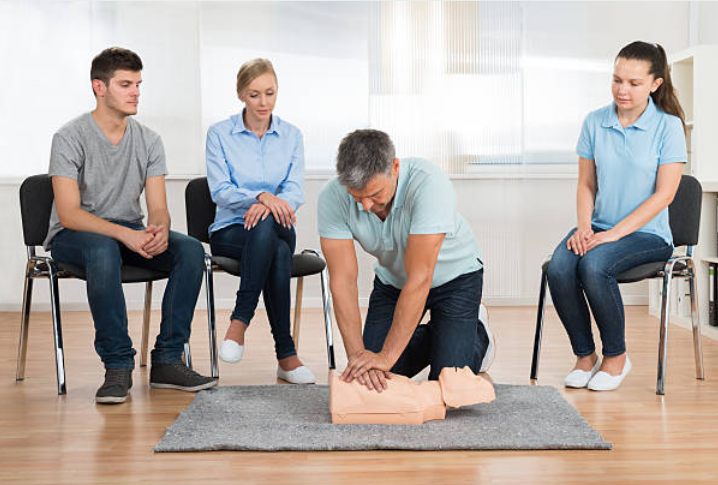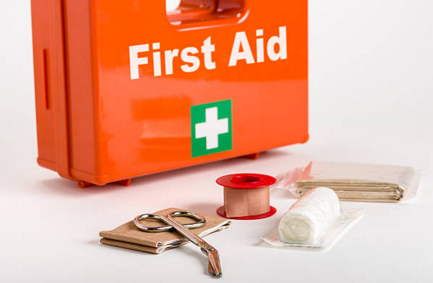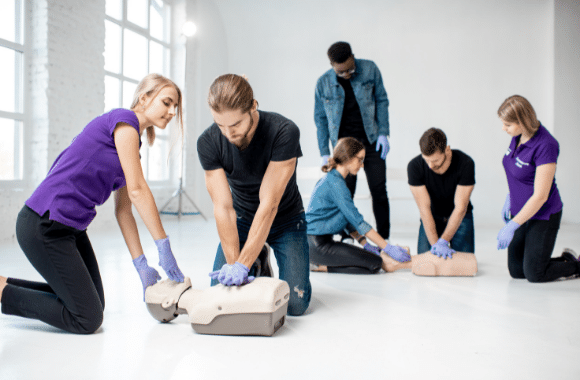Here are the advantages of corporate CPR certification:
- Increased Risk of Cardiac Arrest at the Workplace:
eople working in corporates spend most of their awake hours at work, which increases the likelihood of cardiac arrest occurring during the working hours. In such an event, it is always best for a CPR-certified individual to provide CPR and administer AED within the shortest time possible.
As we saw above, full-time employees have limited time for physical exercise, which puts them at an increased risk of suffering from heart and cardiovascular problems.
Stress associated with work is also another risk factor for cardiac arrest. This stress could result from limited time for recreation, lack of a robust support system or narrow social circle, and pressure from work in terms of performance and deadlines.
When cardiac arrest occurs, you cannot always count the emergency response services to get there to save the victim. Cardiac arrest victims will die in minutes if CPR is not provided in time.
The victim needs to receive CPR within the first few seconds following an attack failure to which they die. When cardiac arrest occurs, the victim has difficulty breathing or stops breathing altogether. The heart is also not pumping blood critical in supplying oxygen to the essential organs.
The brain requires higher levels of oxygen than any other organ in the human body. Suppose the supply of oxygen to the brain is insufficient. In that case, brain cells begin to die, the victim could suffer permanent brain damage. If prolonged, they could die.
CPR takes the form of chest compressions at the rate of 100 compressions per minute. These compressions work by providing an artificial heartbeat to the victim, enabling blood to pump through the body. Even without mouth-to-mouth ventilation, the human blood contains enough oxygen to sustain life for some minutes before professional help arrives.
The responder needs to do it right to save the life of the victim. Studies by the AHA show that the quality of CPR determines the survival of the victim. In this case, the responder needs to give the desired number of compressions per minute and the recommended depth depending on the victim’s age.
For this reason, CPR training or certification is essential for everyone. If an organization can offer training for its employees, it could save lives within and outside the organization.
- CPR Training Eensures Safety at the Workplace:
When employees are equipped with CPR and first aid skills, they feel much safer at work because they know they can handle any emergencies that could occur. More importantly, it helps reduce the cases of cardiac arrest at the workplace.
The training also helps organizations and individuals take the necessary measures to prevent the occurrence of these emergencies. Since everyone is aware of the risk of cardiac arrest and the associated outcomes, they can make lifestyle adjustments to prevent such cases.
The risk of cardiac arrest is reduced as employees can do regular medical check-ups. It could be on their cholesterol, diabetes, and other underlying conditions that increase the risk of cardiac arrest.
Organizations that acknowledge the importance of CPR training are also likely to offer the necessary assistance and provide a conducive working environment for their staff. This may involve the creation of appropriate work schedules, a stress-free work environment, free gym services, and free medical check-ups.
- CPR Classes are Easily Accessible:
As stated above, everyone is eligible for CPR training. Also, the cost of training for CPR is quite affordable. An individual will pay less than $20 for the CPR certification that is valid for two years.
CPR training for organizations is also more advantageous. This applies more to organizations that opt for group CPR certifications for their employees. CPR certification providers offer great rates for groups and organizations, which are often cheaper than individual training, depending on the size of the group.
These training institutions can also offer better and more customized CPR training sessions depending on the nature of the organization and the risks involved. The training organization can also choose which schedules are best suited for them and their staff.
For in-house training, the organizational management can organize training schedules matching their needs, ensuring that this course is available to all staff members.
While some organizations opt to pay for their employees, others will require them to take up the training independently. Paying for this training as part of the staff development programs can be quite beneficial in boosting the staff morale.
Online CPR Certification for Corporates
The availability of online healthcare training classes has made it easier for employees whose jobs require mandatory CPR training to acquire and renew their certification. The benefits offered by online CPR certifications are difficult to ignore as it provides flexibility.
Professionals with busy schedules can take up CPR training and certification at their own convenience. Online CPR programs are not limited by time or space. As a result, individuals can take up the training anytime of choice and from anywhere.
Online CPR certification is also helpful for persons within different time zones with the training institution. Additionally, it is also much cheaper than in-person training. If the organization is looking at cutting on the training cost, this could be a good option.
Also, online training is highly recommended due to the Covid-19 pandemic. This is because online training does not require travelling, and there is no risk of exposure to the Covid-19 virus.
Read the complete article here.




